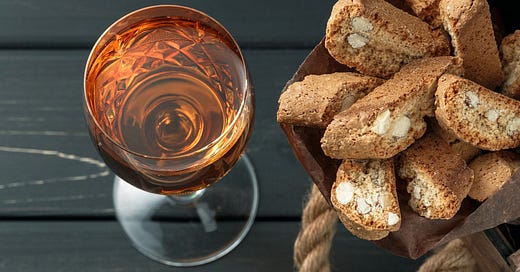We continue to call for submissions today. It’s a good chance to practise and taper for your exams 💪
❗A few rules
Submit hand-written answers ONLY
On past exam queestions that appeared on Day 68-70 entries
Time yourself to max 40 minutes
Open book is okay but try not to fact check all the time
If you want focused feedback on a particular area or have a burning question, send them along with your handwritten answers
💡 What you get
Kelly’s perosalised feedback for you
AI generated grading and suggestions as an extra
📩 Ways to submit
Email: send photos of your handwritten answers by replying to this email
Comment: upload the photos of your handwritten answer to Imgur and post the link in the comment section
💪 Warm up time
Let’s revise rootstocks and how they help to overcome regional viticultural challenges 🤓 Consider the following:
In Anjou, due to high lime content in the soils, rootstocks such as Fercal and Riparia Gloire de Montpellier are used to protect the vines from chlorosis.
41B (vinifera x berlandieri) rootstock is widely used in Chablis as it is highly tolerant of limestone soils with a high pH.
Low vigour rootstock 3309 is widely used by top Northern Rhone growers for their mass selected Syrah clones for more concentrated, deeper coloured must.
110R, 140R and other rootstocks from V. rupestris and V. berlandieri parentage are used widely in Lodi for their drought-resistance.
The answer to this warm up question is at the end of today’s entry.
⏳ Past exam question
Question four from the January 2021 exam
Explain how sweet wine production in the following regions determines wine style:
a) Tuscany (30% weighting)
b) Niagara Peninsula (35% weighting)
c) Tokaj (35% weighting)
💡 Examiner’s report
© Wine & Spirit Education Trust
This was popular question and overall candidates performed well. There were a number of merit and distinction grades, and most candidates divided their time well between each of the three sections. This is often not the case and there was clear evidence of good planning amongst the better performing candidates. There were few scripts missing part of an answer – presumably because of gaps in knowledge or had issues with timing - which was pleasing. Passing candidates’ answers were well structured, covering most of the key points and top candidates were able to go into more detail, link their ideas and directly compare the various wine styles and production methods. Although this was not asked for or required to score highly, it showed initiative, and when done competently supported their commentary well.
In general, answers were a little short but they were to the point with good factual detail, and they contained little irrelevant generic narrative. This may be due to the fact that each wine region has distinctive production techniques, and candidates were able to recall and explain these well in turn. Although many candidates slipped into simple descriptions of processes and methods, this was often enough to obtain a pass as they included sufficient relevant detail and facts to support their answers. Better candidates fully explained the link between grape growing and winemaking methods and the wines produced. This answered the question more successfully and showed a far stronger understanding of the regions and the wines made.
The poorest-performing candidates either confused production methods or showed very little understanding of how sweet wines are made. Several barely attempted to highlight any differences between the production techniques, only listing generic methods with little commentary on which regions each is most associated with. A few candidates confused fortified wine production methods with sweet wine production.
For the section on Tuscany scripts were generally well answered with candidates showing a good understanding of the appasimento process and resulting style. Common errors included referring to grapes as being sun-dried, and a failure to reference the grape varieties for Vin Santo (or omitting to reference it entirely). A few candidates misidentified Moscato d’Asti in their answers and this was generally the weakest section, but most candidates gave a reasonable commentary.
Answers on the Niagara Peninsula were generally good, and candidates were able to reference the growing environment as well as the various practices in the winery, and give a description of the whole process to varying degrees of accuracy. Many candidates refenced key producers and the only common shortcoming was difficulty in naming all the grape varieties commonly used to make Icewine. Many answers were limited to Vidal and Riesling.
The section on Tokaj was the strongest answered section for the vast majority of candidates, suggesting it is both the region and the method of producing sweet wines that they are most familiar and confident with. Although most candidates concentrated on production technique, the highest marks were awarded to those who also referred to climatic factors and geographical detail in their explanations.
🥁 Answer to today’s warm up question
✔️ In Anjou, due to high lime content in the soils, rootstocks such as Fercal and Riparia Gloire de Montpellier are used to protect the vines from chlorosis.
✔️ 41B (vinifera x berlandieri) rootstock is widely used in Chablis as it is highly tolerant of limestone soils with a high pH.
✔️ Low vigour rootstock 3309 is widely used by top Northern Rhone growers for their mass selected Syrah clones for more concentrated, deeper coloured must.
❌
110R,140Rand other rootstocks fromV. rupestrisandV. berlandieriparentage are used widely inLodifor their drought-resistance.In California's Lodi region, sandy soils mean that phylloxera has not been a problem in some areas of the AVA, allowing for older, own-rooted vines
Textbook references
Anjou: WSET Diploma in Wines D3 textbook p77
Chablis: D3 textbook p34
Lodi:D3 textbook p424; see also Lodi Wine’s blog
Northern Rhone: D3 textbook p100
Rootstocks in general: D1 textbook p60-52










